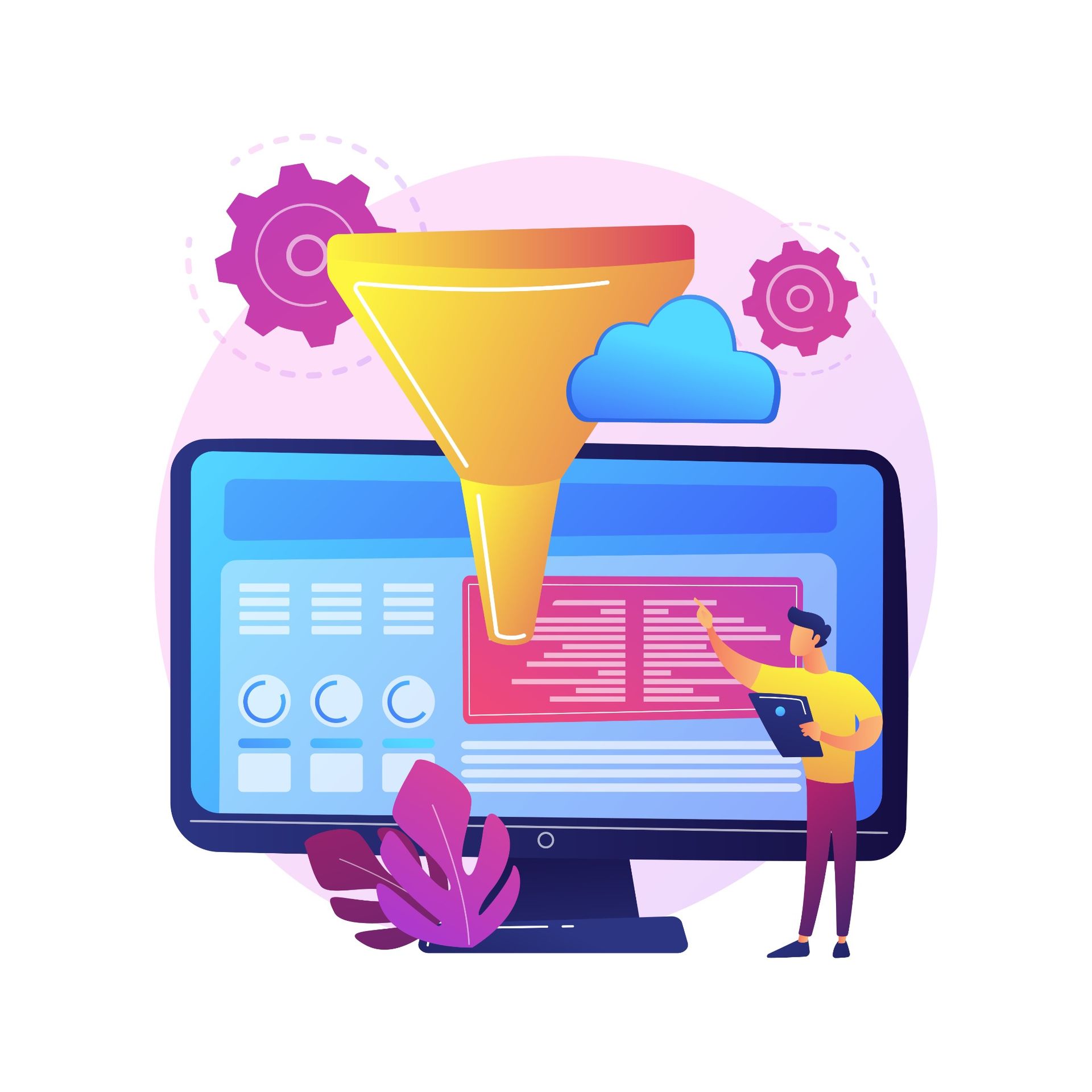Target Audience Identification: How To Define And Understand Your Coaching Customers
Target Audience Identification: How To Define And Understand Your Coaching Customers
In the vast world of coaching, one thing separates the good from the great—understanding your audience. Knowing who you're talking to is as crucial as the advice you offer.
Whether you're a life coach, business mentor, or fitness guru, identifying and understanding your target audience will make your coaching more effective and your business more successful.
In this blog post, we'll explore the strategies to define and understand your coaching customers.
Why Knowing Your Audience Matters
Every successful coaching business starts with a deep understanding of its audience. Knowing who your ideal clients are can shape every aspect of your business, from marketing to service delivery. It ensures that your messages resonate, your services meet needs, and your clients feel seen and understood.
The Power of Personalization
Personalization is key in coaching. When you know your audience, you can tailor your services to their unique needs, making your coaching more impactful. Personalized coaching helps build trust, improve client satisfaction, and foster long-term relationships.
Informed Marketing Strategies
Effective marketing relies on knowing your audience. Understanding their pain points, preferences, and behaviors allows you to create targeted campaigns that attract the right clients. This focus can reduce marketing costs and increase ROI.
Enhanced Client Engagement
Engaged clients are more likely to succeed and stay loyal. By understanding your audience, you can create content and experiences that resonate with them, boosting engagement and retention.
Defining Your Target Audience
Defining your target audience is the first step in understanding them. It involves identifying the specific group of people who will benefit most from your coaching services.
Demographics Matter
Start with demographics. These are the statistical characteristics of a population and include age, gender, income level, education, and occupation. Knowing these basics provides a foundation for further understanding.
For example, if you're a career coach, your target audience might be professionals in their mid-30s to 50s, looking to switch careers or advance in their current field.
Psychographics Insight
Psychographics go beyond demographics to explore the attitudes, interests, values, and lifestyles of your audience. This information helps you understand why your audience behaves the way they do.
Imagine you’re a health coach. Knowing that your audience values a holistic lifestyle, enjoys outdoor activities, and is interested in sustainable living can shape your coaching programs and marketing messages.
Behavioral Data
Behavioral data involves understanding how your audience interacts with your services. This can include their purchasing habits, feedback patterns, and engagement levels.
For instance, if you notice that clients who attend your webinars are more likely to sign up for one-on-one coaching, you can focus on hosting more webinars to attract similar clients.
Conducting Audience Research
Research is essential for gaining a deep understanding of your audience. It involves collecting data and insights to inform your coaching strategies.
Surveys and Questionnaires
Surveys and questionnaires are effective tools for gathering information about your audience. They allow you to ask direct questions about their needs, preferences, and challenges.
Create a survey with questions like, "What are your biggest challenges?" and "What type of coaching services do you prefer?" This information can guide your service offerings and marketing strategies.
Social Media Listening
Social media platforms are goldmines for audience insights. By monitoring conversations and engagements, you can learn what topics interest your audience and how they feel about certain issues.
Use tools like Hootsuite or Sprout Social to track mentions of your brand and relevant keywords. This can help you understand your audience's sentiment and interests.
Client Interviews
Interviews provide in-depth insights into your audience's needs and experiences. They allow for open-ended questions that can reveal valuable information.
Schedule interviews with a few of your clients and ask about their goals, challenges, and feedback on your services. This qualitative data can complement the quantitative data from surveys.
Creating Customer Personas
Customer personas are fictional representations of your ideal clients. They help you visualize and empathize with your audience, making it easier to tailor your services and marketing efforts.
Building a Persona
Start by summarizing the demographic, psychographic, and behavioral data you've collected. Give your persona a name, age, occupation, and background story.
For example, "Career-Changing Carla" is a 40-year-old marketing manager looking to transition into a new industry. She values work-life balance, enjoys learning, and is motivated by personal growth.
Using Personas for Personalization
Personas can guide your content creation, service development, and marketing strategies. Use them to ensure that every aspect of your business speaks directly to your target audience.
For instance, create blog posts that address Carla's concerns about career change and offer tips on balancing work and personal life.
Segmenting Your Audience
Audience segmentation involves dividing your broader audience into smaller, more specific groups. This allows for even more targeted and effective communication.
The Importance of Segmentation
Segmentation helps you address the unique needs of different client groups. It ensures that your messages are relevant and your coaching is tailored to specific challenges.
For example, if you're a business coach, you might segment your audience into startup founders, small business owners, and corporate executives. Each group has distinct needs and requires different coaching approaches.
Methods of Segmentation
Common methods of segmentation include demographic, psychographic, geographic, and behavioral factors. Choose the methods that best suit your business and audience.
For instance, segment your audience based on their stage in business development—beginners, intermediates, and advanced. Provide tailored content and coaching services for each stage.
Implementing Segmentation
Use your chosen segmentation methods to create targeted marketing campaigns, personalized coaching programs, and specialized content.
For example, send a newsletter with beginner tips to your new clients and advanced strategies to your seasoned clients. This ensures that everyone receives relevant and valuable information.
Understanding Client Pain Points
Identifying and addressing your client's pain points is crucial for effective coaching. Pain points are specific problems or challenges that your audience faces.
Identifying Pain Points
Use your research methods to uncover common pain points among your audience. Look for recurring themes in survey responses, social media comments, and client interviews.
For example, if many clients mention struggling with time management, this is a pain point you can address in your coaching sessions.
Addressing Pain Points
Develop coaching programs, content, and solutions that directly address these pain points. Show your clients that you understand their challenges and have the expertise to help them overcome them. For instance, offer a time management workshop or create a blog post with practical tips for better time management.
Communicating Solutions
Clearly communicate how your coaching services can alleviate your client's pain points. Use compelling language and real-life examples to demonstrate the benefits.
For example, share a success story of a client who improved their time management skills through your coaching and achieved their goals.
Leveraging Data Analytics
Data analytics can provide valuable insights into your audience's behavior and preferences. Use this information to refine your coaching strategies and improve client satisfaction.
Tracking Engagement
Monitor how your audience engages with your content, services, and marketing efforts. Look at metrics like website traffic, social media interactions, and email open rates.
For example, if a particular blog post receives a lot of traffic and comments, this indicates a high level of interest in that topic. Create more content around similar themes.
Analyzing Feedback
Regularly review client feedback to identify areas for improvement and new opportunities. Use surveys, reviews, and direct communication to gather feedback.
For instance, if clients consistently praise your one-on-one coaching sessions but request more group sessions, consider offering group coaching as an additional service.
Making Data-Driven Decisions
Use the insights from your data analytics to make informed decisions about your coaching business. Adjust your strategies based on what the data tells you. For example, if your data shows that clients prefer video content over written content, focus on creating more video resources for your audience.
Understanding and connecting with your audience is the foundation of a successful coaching business. By defining your target audience, conducting thorough research, creating personas, and leveraging data analytics, you can deliver personalized and impactful coaching that resonates with your clients.
Ready To Take Your Coaching Business To The Next Level?
Partner with Lee Davis and Company Marketing, the digital marketing agency in Peterborough specializing in coaching businesses like yours. Our team of experts is dedicated to helping you reach your ideal clients, enhance your engagement, and achieve lasting success.
Don't wait to transform your coaching practice. Contact Lee Davis and Company Marketing today to schedule a consultation with our
SEO agency for business coaches. Discover how our personalized marketing solutions can drive your business forward.









